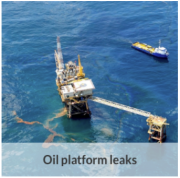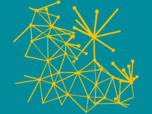fortnightly
Type of resources
Topics
Keywords
Contact for the resource
Provided by
Years
Formats
Representation types
Update frequencies
status
Resolution
-

-

Un échantillonnage moléculaire (acides aminés et alcanes linéaires) bi-mensuel, aux stations Bouée 13, Tès (Eyrac) et Comprian, de la colonne d'eau (à pleine mer et en surface) est effectué afin de déterminer la qualité et l'origine de la matière organique particulaire. Cet échantillonnage est effectué en supplément de celui réalisé dans le cadre du SOMLIT (Service d'Observation en Milieu LITtoral) et du suivi pelagos effectué dans le chenal d'Arès (cf. fiches métadonnées associées)
-

SACROIS est un algorithme de croisement de données qui produit des séries de données d’activité de la pêche professionnelle (données de production et d’effort validées, consolidées et qualifiées) pour les navires inscrits au fichier Flotte de Pêche Communautaire (FPC). SACROIS sélectionne le meilleur parti des sources d’informations disponibles pour produire les données d’activité de pêche de référence. SACROIS consiste en une application opérationnelle de rapprochement, vérification et contrôles de cohérence de différents flux unitaires de données. L’algorithme SACROIS ne corrige pas la donnée, il a pour objectif de : - fournir la meilleure estimation possible des différents éléments constituant une marée à partir des sources de données disponibles, - identifier les incomplétudes des différentes sources de données et en proposer une synthèse complétée par des indicateurs de qualification de la donnée issus des croisements. Ainsi l’algorithme SACROIS produit deux fois par mois une nouvelle source de données ; synthèse de l’ensemble des sources de données disponibles : les marées SACROIS reconstituées. Les données SACROIS ont été calculées depuis 2000 pour toutes les flottilles pour lesquelles des données sont disponibles : - Mer du Nord – Manche – Atlantique (hors senneurs tropicaux), - Méditerranée (hors senneurs à thons rouges), - DOM (La Réunion, Mayotte, Guyane et Antilles).
-

Un échantillonnage bi-mensuel, à la station G, de la colonne d'eau (à pleine mer, en surface) est effectué afin de déterminer la qualité et l'origine de la matière organique particulaire. Cet échantillonnage est effectué en supplément de celui réalisé dans le cadre du SOMLIT (Service d'Observation en Milieu LITtoral) aux stations Bouée 13, Tès et Comprian.
-

Il s'agit d'un suivi des évènements d'érosion/dépôt d'un estran colonisé par un herbier de Zostera noltii. Les altimètres ALTUS mesurent en continu la hauteur du sédiment, les vagues et la marée.
 Catalogue PIGMA
Catalogue PIGMA